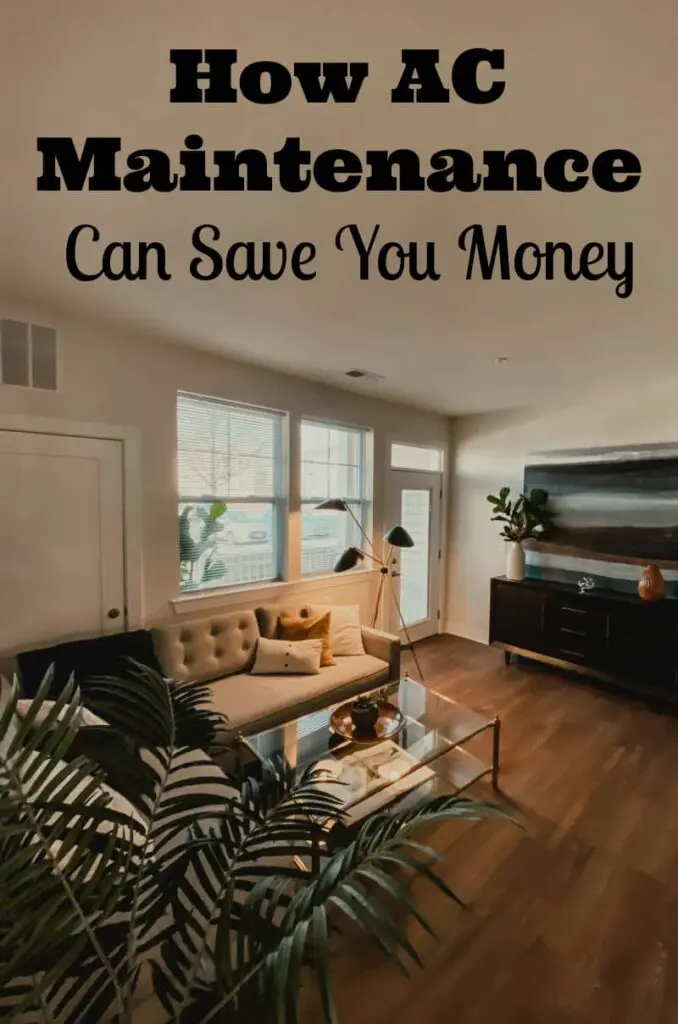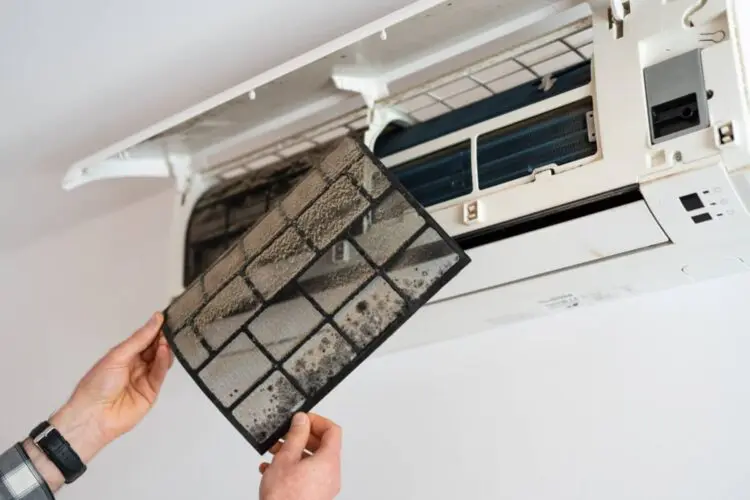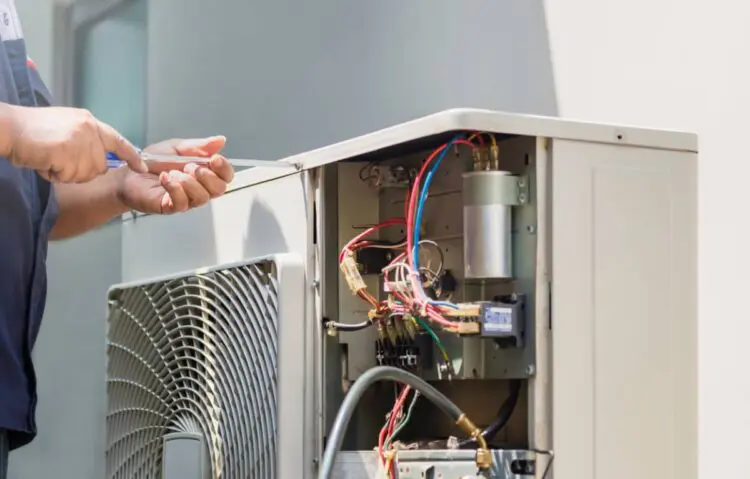You rely on your air conditioner (AC) to keep your home cool and comfortable, especially during those scorching summer months. But did you know that according to American energy experts, skipping regular AC maintenance could be costing you more than you think? A neglected system works harder, consumes more energy, and leads to higher utility bills. The good news? Simple, routine maintenance can keep your AC running efficiently, slash your energy costs, and even extend the lifespan of your unit. Read on to learn more.

How Regular AC Maintenance Can Save You Money On Energy Bills
Regular air conditioner maintenance is essential to keep your system running at peak performance while improving indoor air quality and energy efficiency. Through preventative maintenance, homeowners can avoid costly AC repairs and ensure their central air conditioners function optimally year-round. Key tasks, such as cleaning air conditioner filters, checking the condensate drain, and inspecting the outside unit, help prevent breakdowns and extend the system’s lifespan. Scheduling routine service with HVAC professionals ensures that every component is in top shape, keeping your home cool and comfortable. Here are 10 reasons to make sure to have an air conditioner maintenance checklist performed once a year.
1. Low Refrigerant Levels Reduce Cooling Power
Your AC doesn’t just blow cold air—it relies on refrigerant to absorb heat from your home. If levels are low (due to leaks or improper charging), your system struggles to cool efficiently.
An undercharged AC runs longer cycles, driving up energy use. Worse yet, low refrigerant can cause the compressor to overheat, leading to costly repairs.
Luckily, you can restore your AC’s optimal refrigerant levels through Logan Cincinnati A.C. maintenance if you’re from that area. Aside from that, if your AC isn’t cooling as well as it used to, have a technician check refrigerant levels during your next tune-up.
2. Dusty Coils Make Your System Less Efficient
Your AC’s evaporator coils and condenser coils play a huge role in heat exchange. Over time, dust and grime build up on them and act like insulation – this reduces their ability to absorb or release heat and proper airflow.
When coils are dirty, your system runs longer to reach the desired temperature—wasting energy and driving up bills. Cleaning them annually can help restore your AC to its optimal performance state.

3. Dirty Filters Force Your AC to Work Harder
Changing or cleaning your air filters regularly is a must for regular maintenance. Why? A clogged filter restricts airflow, forcing your system to strain just to push cool air through.
The harder your AC works, the more energy it burns. In fact, experts estimate that replacing a dirty filter can lower energy consumption by a considerable percentage.
Happily, cleaning or replacing dirty AC filters can be done DIY-style as part of regular air conditioner maintenance.
4. Worn-Out Parts Increase Energy Waste
Your AC’s fans, belts, and motors wear down over time.
A squeaky blower fan or a frayed belt creates friction, making your system work harder than necessary. Loose electrical connections can also cause energy loss. Listen for unusual noises—grinding, rattling, or squealing could signal worn parts.
Regular inspections catch the above mentioned issues early, preventing minor problems from turning into major energy drains.
5. Poor Thermostat Settings Waste Energy
Even a well-maintained AC can waste energy if your thermostat isn’t optimized. Cranking the temperature too low forces the system to run nonstop. Meanwhile, poor placement (near heat sources or in direct sunlight) leads to false readings.
A programmable or smart thermostat helps by adjusting temperatures automatically when you’re asleep or away. If you only have a manual thermostat, set it at optimal levels when you’re home and higher when you’re out to save energy without sacrificing comfort.
6. Leaky Ducts Lose Cool Air (and Money)
If your ductwork has gaps or cracks, cooled air escapes before reaching your rooms. That means your AC runs longer to compensate—sometimes wasting a third of all already conditioned air.
Sealing and insulating ducts keep cool air where it belongs, reducing strain on your system. Pro tip: have a professional technician inspect ducts every few years, especially if some rooms feel warmer than others.
7. Overgrown Outdoor AC Units Block Airflow
Your condenser unit (the outdoor part of your indoor unit) needs clear space to release heat. If it’s surrounded by bushes, grass, or debris, airflow gets restricted, reducing efficiency.
Keep at least two feet of clearance around the unit and clean off leaves or dirt regularly. Besides that, you can hose down the condenser gently each season to remove dirt buildup.

8. Skipping Tune-Ups Leads to Costly Breakdowns
Just like a car, your AC needs regular check-ups. A professional tune-up includes checking refrigerant levels, inspecting electrical components, lubricating moving parts, and testing thermostat accuracy. Neglecting these steps leads to gradual efficiency loss—and eventually, expensive emergency repairs.
Keep in mind the following pro tip: Schedule annual maintenance before peak cooling season to ensure your system is in top shape. Make an appointment with a professional or use this seasonal HVAC tune-up guide.
9. An Aging AC Drains More Energy
Even with great maintenance, older units (aged more than a decade) lose efficiency over time. If your AC is constantly needing repairs and your bills keep climbing, upgrading to a newer model with built-in energy efficiency features could save you almost half on cooling costs.
When purchasing a new AC, look for units with a high energy efficiency rating—the higher the number, the more efficient the system.
10. Small Fixes Add Up to Big Savings
You don’t need a complete overhaul to see savings. Simple habits make a difference:
- Keep vents unblocked;
- Use ceiling fans to help circulate air;
- Close blinds during the hottest part of the day; and so on.
Combined with regular maintenance, these tweaks keep your AC running smoothly and your energy bills low.
Final Thought: A Little Maintenance Goes a Long Way
Regular air conditioner maintenance provides peace of mind, ensuring your central AC runs efficiently and reliably. Simple tasks like keeping clean filters, straightening bent fins, and using a vacuum cleaner to remove debris from the outdoor condenser coil can improve performance. However, for more complex issues—such as damaged coil fins or screen reader problems when adjusting settings—hiring a professional HVAC technician is the best solution. A routine AC tune-up by a qualified HVAC contractor or service technician ensures your system operates smoothly, maximizing comfort and efficiency. Investing in professional services now can help prevent costly repairs down the road.
Your AC is one of the biggest energy consumers in your home—but with proper care, it doesn’t have to be a money drain. By staying on top of filter changes, coil cleanings, and professional tune-ups, you’ll improve efficiency, prevent costly repairs, and enjoy lower energy bills year after year. The bottom line? Spending a little time (and money) on maintenance now saves you a lot in the long run. Have you scheduled your HVAC system check up yet this year?
Related Posts:
How to Go Green at Home And Save Money At The Same Time

Fames Hunter says
Wow, never really thought about AC maintenance like that! Makes total sense how keeping it clean and checked up saves you so much money in the long run. Definitely gonna start paying more attention!
Frank says
I love how you highlighted simple DIY tasks like cleaning filters and checking the condensate drain, as well as the importance of professional tune-ups.
Sara says
Regular air conditioner maintenance is definitely worth the effort to keep a system running efficiently and avoid costly repairs. Says the lady with costly repairs- me!
Web Fame says
Thank you for this super informative post! I never realized how much regular AC maintenance could actually help cut down on energy costs. Your tips were clear, practical, and eye-opening. I’m definitely going to start paying more attention to my unit – this was a real money-saver. Appreciate you sharing this!
Satyam jadaun says
Great insights! Most people ignore AC maintenance until something goes wrong. Preventive care definitely saves both energy and repair costs. Appreciate this helpful post.
Atech says
I completely agree that regular AC maintenance is key to saving money in the long run. Simple steps like changing filters and cleaning coils can make a huge difference in efficiency and prevent costly repairs down the road. It’s definitely worth the small investment of time and money now to avoid higher energy bills later. Thanks for the reminder to stay on top of routine check-ups.